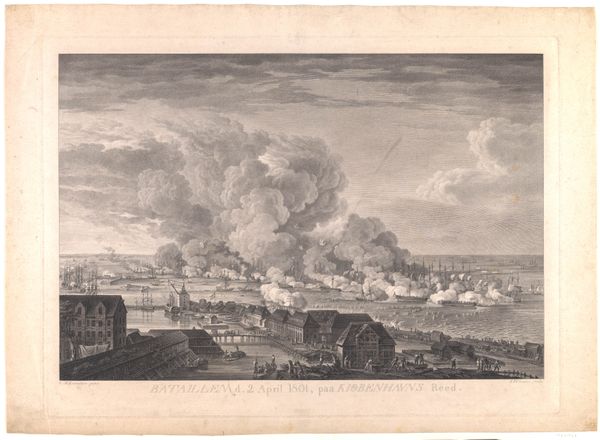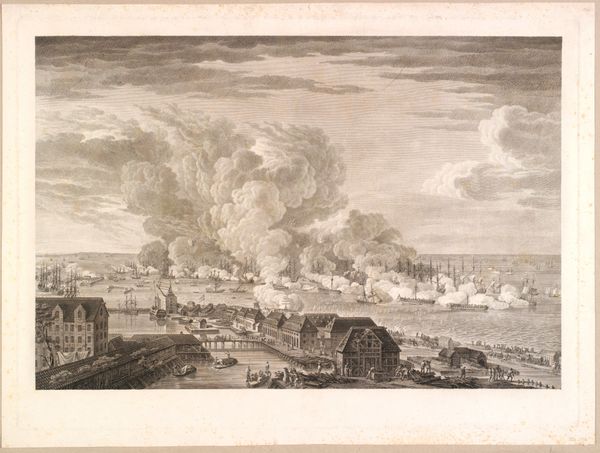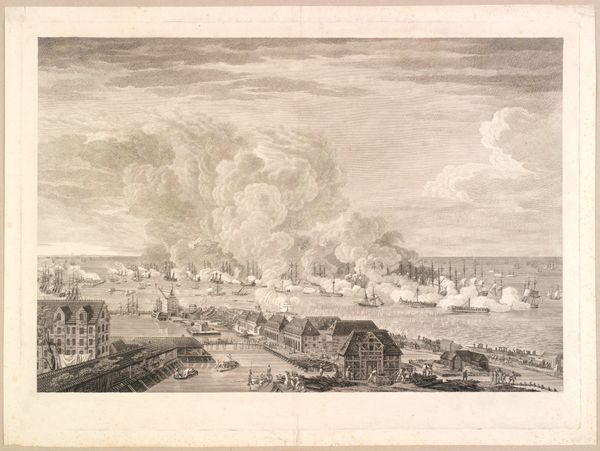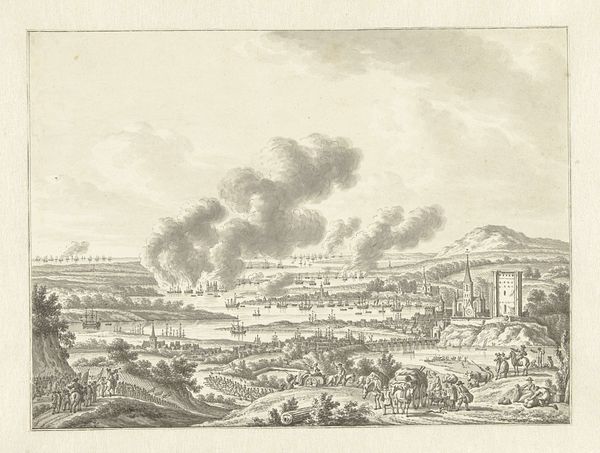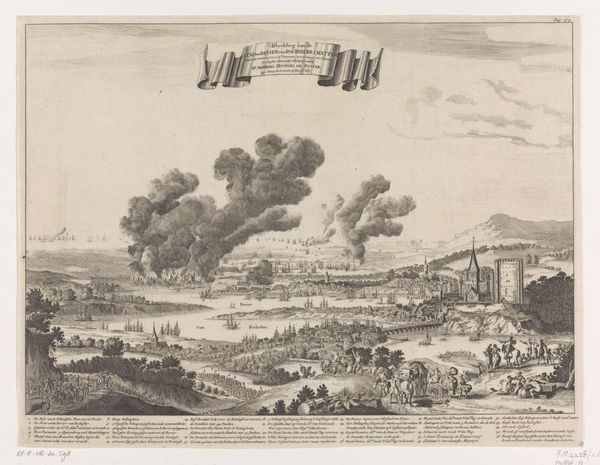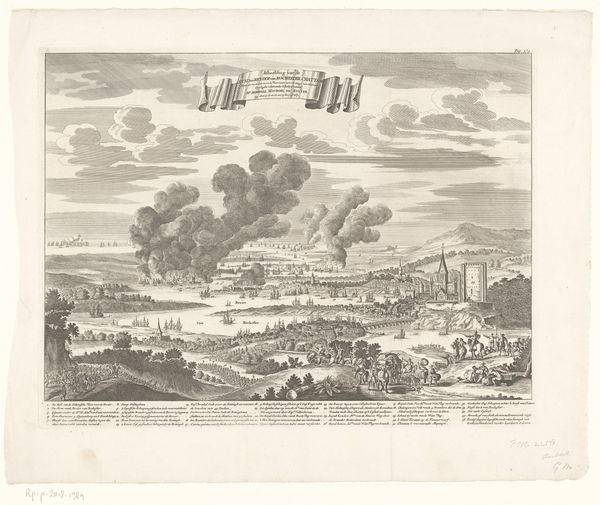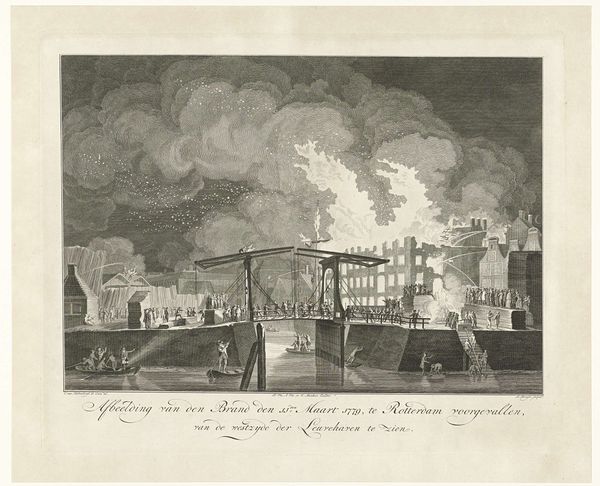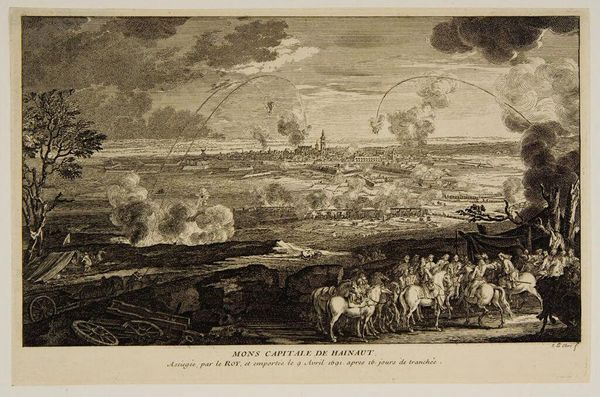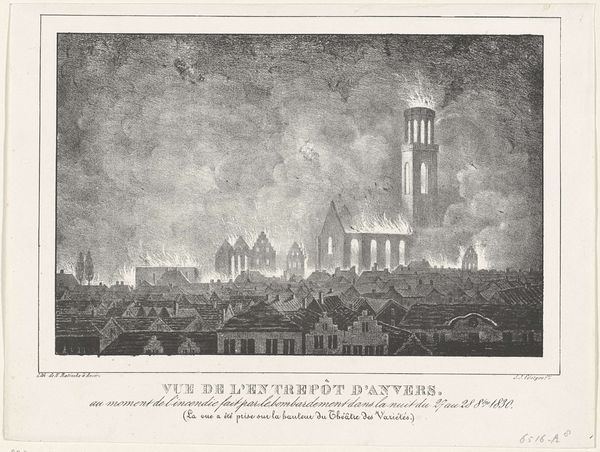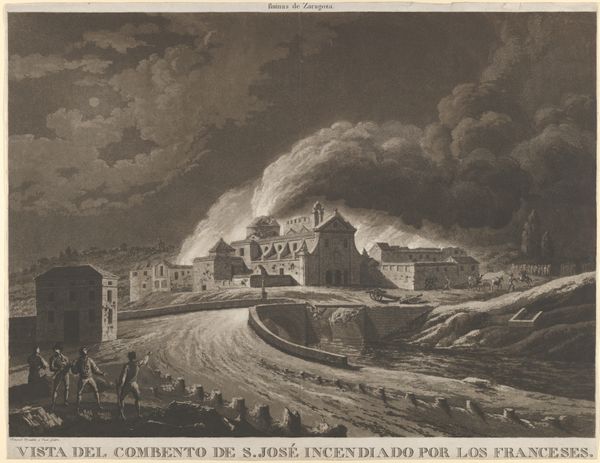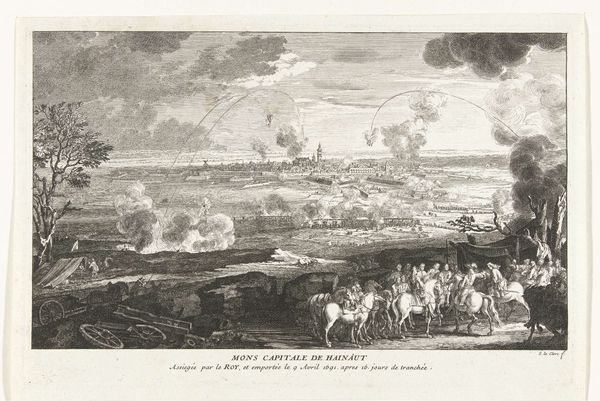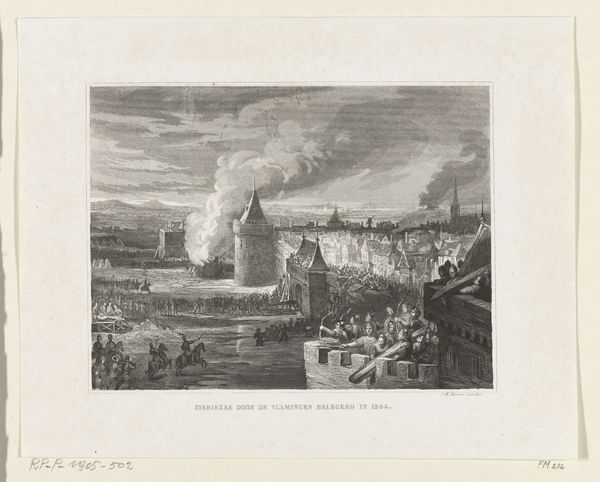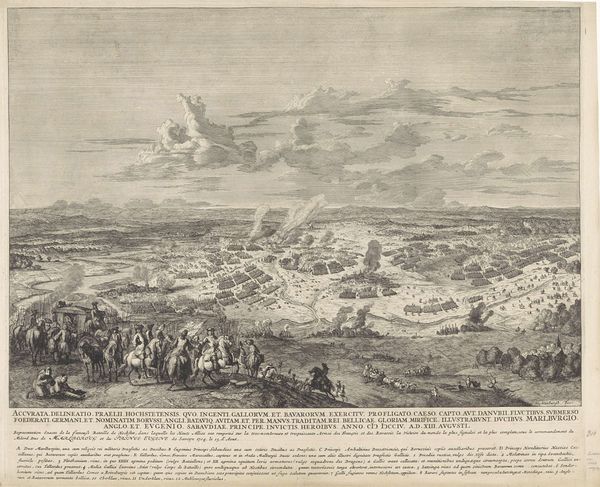
Dimensions: 584 mm (height) x 805 mm (width) (Plademål), 508 mm (height) x 757 mm (width) (billedmaal)
Curator: This is J.F. Clemens’s engraving, “The Battle of Reden, 2 April 1801,” created between 1802 and 1805. It's a print held here at the SMK. What’s your immediate take on this piece? Editor: It's a powerful image, filled with smoke and the implied chaos of battle. The stark contrast between the dark ships and the billowing white smoke gives it a dramatic, almost theatrical feel. The craftsmanship looks detailed too. Curator: Indeed. Clemens renders a critical historical moment – the Battle of Copenhagen – within a framework deeply influenced by socio-political tensions of the Napoleonic era. Consider how naval power was tied to colonialism and international trade at that time, this wasn't merely a battle; it was a clash of empires wrestling for control. Editor: You see that struggle reflected in the engraving's material qualities as well? The act of engraving itself involves labor, skill, and access to materials, which were, like naval power, tied to structures of social and economic dominance. It makes you think about who benefitted and who suffered to produce the resources needed for this war *and* this image. Curator: Precisely! And it gets even more layered. Think about who Clemens was, what his social standing enabled, and for whom he created this. Whose perspective dominates? Whose stories are sidelined in his depiction? There are intersectional complexities around national pride, colonial authority and gender expectations that ripple outwards. Editor: Looking closely, you can almost see the labor etched into the plate, multiplied through each print. Even the ink becomes evidence of a broader network—from production to distribution and eventual consumption by audiences absorbing their own political positions on events depicted. I'm thinking about materiality, and that material record offers hints about cultural consumption in a historical era of conflict. Curator: Considering the work through this historical and social framework prompts us to think about its ongoing relevance. War may manifest differently today, but geopolitical contestations continue alongside societal dynamics linked back generations past. "The Battle of Reden" is thus an artifact that embodies history even as that historical legacy ripples outwards, making impressions in present contexts and identities. Editor: It makes you reflect on the complex interweaving of conflict, representation, labour and how meanings continue shifting. Definitely a rewarding piece to think with.
Comments
No comments
Be the first to comment and join the conversation on the ultimate creative platform.
